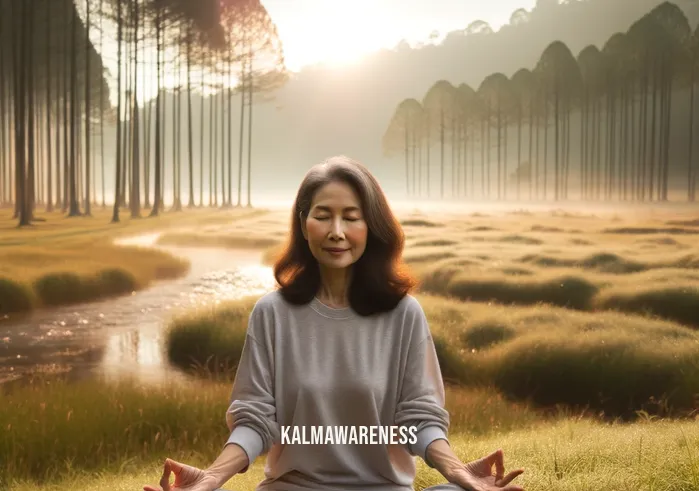Understanding “Mind You”: A Journey into Mind and Emotions
Introduction
Hello there! Have you ever stopped to think about the phrase “mind you”? It’s more than just a saying; it’s a gateway to understanding our minds and emotions. This phrase, often sprinkled in our daily conversations, holds the key to a deeper awareness of ourselves. So, let’s dive in!
What Does “Mind You” Mean?
At its core, “mind you” is about paying attention. It’s a nudge to consider something important, a reminder to be mindful of the details. In our fast-paced world, it’s easy to overlook the subtle yet significant aspects of our experiences and thoughts.
Mindfulness and Emotions
Mindfulness, a crucial aspect of “mind you,” involves being fully present and aware of our thoughts, feelings, and surroundings. It’s not just about being aware; it’s about being non-judgmental and accepting of whatever arises in our minds. This practice can lead to profound changes in how we process emotions and interact with the world. To explore this further, check out Mindful Muscle for insights into combining mindfulness with physical well-being.
Habitual Thinking
Another key aspect of “mind you” is understanding our habitual thinking patterns. These are the repetitive thoughts that often go unnoticed but significantly influence our emotions and behaviors. Recognizing these patterns is the first step towards changing them. For a deeper understanding, the article on Habitual Thinking Definition offers valuable insights.
The Power of Mindfulness
Embracing mindfulness can transform our emotional world. It helps us recognize our emotional triggers and respond to them in healthier ways. Mindfulness isn’t about suppressing emotions; it’s about experiencing them fully, without judgment or avoidance. This leads to greater emotional intelligence and resilience.
“Mindfulness isn’t difficult; we just need to remember to do it.” – Sharon Salzberg
Engaging with Mindfulness
How do we integrate “mind you” into our daily lives? It starts with simple practices like focused breathing, mindful walking, or even eating. The goal is to be fully present in the moment, experiencing life as it unfolds.
Mindfulness in Motion
Activities like yoga, tai chi, or even mindful walking are excellent ways to practice mindfulness. They combine physical movement with mental focus, creating a powerful tool for self-awareness and emotional regulation. Learn more about this by visiting Meditation in Motion.
Conclusion
As we conclude this first segment, remember that “mind you” is not just a phrase; it’s a call to deeper self-awareness and emotional understanding. By being mindful, we can transform our relationship with our minds and emotions, leading to a more fulfilling and balanced life.
Stay tuned for the next segment, where we’ll dive deeper into practical mindfulness techniques and their impact on our daily lives. You won’t want to miss it!

Deepening Our Mindfulness Journey with “Mind You”
Storytelling and Mindfulness
Imagine a day filled with back-to-back meetings, constant notifications, and a never-ending to-do list. Amid this chaos, you pause, take a deep breath, and remind yourself, “Mind you, this moment is all I have.” This simple act of mindfulness can shift your entire perspective, bringing calm and clarity to a hectic day.
The Role of Anecdotes in Mindfulness
Personal anecdotes and stories make the concept of “mind you” more relatable. They illustrate how mindfulness can be seamlessly integrated into our daily lives, transforming ordinary moments into opportunities for self-awareness and growth.
Mindfulness in Action
To truly grasp the impact of “mind you,” let’s compare two common scenarios – one approached with mindfulness and the other without.
| Situation | Without Mindfulness | With Mindfulness |
|---|---|---|
| A stressful work meeting | Reacting impulsively, feeling overwhelmed | Taking a moment to breathe, responding calmly |
| A misunderstanding with a friend | Jumping to conclusions, escalating the conflict | Listening attentively, seeking to understand |
This table illustrates how mindfulness can alter our reactions, leading to more positive outcomes.
Everyday Mindfulness Practices
Mindfulness doesn’t have to be confined to meditation cushions. It can be as simple as mindful breathing or taking a mindful walk. For insights into incorporating mindfulness into martial arts, check out Mindful Martial Arts.
The Miracle of Mindfulness
The transformative power of mindfulness is often described as miraculous. It’s not about changing what’s around us but changing how we perceive and interact with our world.
“The present moment is filled with joy and happiness. If you are attentive, you will see it.” – Thich Nhat Hanh
Mindful Living in the Present
Mindfulness anchors us in the present moment, a concept beautifully encapsulated by Life is Available Only in the Present Moment. It reminds us that the here and now is where life truly unfolds.
Mindfulness for Emotional Health
“Mind you,” in the context of our emotional well-being, serves as a reminder to be gentle with ourselves. Acknowledging and accepting our emotions without judgment is a cornerstone of emotional health.
Embracing Mindful Emotions
Consider the story of someone who learned to mindfully navigate their emotions after a heartbreak. Instead of suppressing their feelings, they allowed themselves to experience and understand their emotions. This mindful approach led to healing and personal growth.
Looking Forward
As we delve further into the world of “mind you,” the final segment of this essay will explore how mindfulness can lead to lasting changes in our lives. We’ll examine the long-term benefits of a mindful lifestyle, providing you with the tools to embark on this transformative journey. Stay tuned for an enlightening conclusion to our mindfulness exploration!

Embracing Mindfulness: The Lasting Impact of “Mind You”
The Practicality of Mindfulness
As we conclude our journey through the world of “mind you,” let’s focus on how to practically apply this concept in our daily lives. The essence of mindfulness is not just in understanding it theoretically but in living it practically.
Implementing Mindfulness in Daily Life
Here are some simple yet effective ways to incorporate mindfulness into your everyday routine:
- Start with Micro-Meditation: Just a few minutes of mindfulness each day can make a significant difference. ‘Micro-meditating’ involves taking short breaks to focus on your breath or surroundings. Explore Micromeditating for more insights.
- Mindful Listening: Practice listening to others without forming immediate responses in your mind. This enhances understanding and empathy.
- Mindful Eating: Pay attention to the taste, texture, and aroma of your food. This not only improves digestion but also enhances your eating experience.
Summarizing Our Mindful Journey
Reflecting on our journey, we’ve explored the multifaceted nature of “mind you,” from its role in emotional intelligence to its practical applications in everyday life. We’ve seen how mindfulness can transform our responses to stress, enhance our emotional well-being, and bring greater clarity and joy to our lives.
“Mindfulness means being awake. It means knowing what you are doing.” – Jon Kabat-Zinn
Key Takeaways from Our Journey
- Awareness: Mindfulness starts with being aware of our thoughts, feelings, and surroundings.
- Acceptance: It involves accepting our experiences without judgment.
- Action: Mindfulness encourages us to respond rather than react to situations.
Moving Forward with Mindfulness
Now that we’ve delved into the essence of “mind you,” it’s time to reflect on how we can continue this journey. Mindfulness is not a destination but a continuous path of self-discovery and growth.
Questions for Reflection
- How can you incorporate mindfulness into your daily routine?
- What changes have you noticed in your emotional responses since practicing mindfulness?
Conclusion and Call to Action
As we wrap up, remember that the practice of mindfulness is a journey that evolves and deepens over time. It’s about finding joy in the present moment and understanding ourselves on a deeper level.
I encourage you to explore more on this topic, perhaps starting with Meditation Stories for Students, which offers engaging and relatable insights into the world of mindfulness.
And finally, I invite you to share your experiences with mindfulness in the comments. How has “mind you” impacted your life? Your stories can inspire and enlighten others on their mindfulness journey. Let’s continue to learn and grow together in this mindful adventure!





